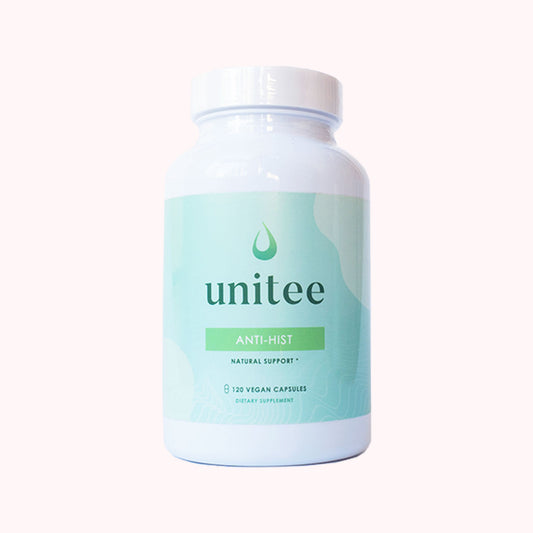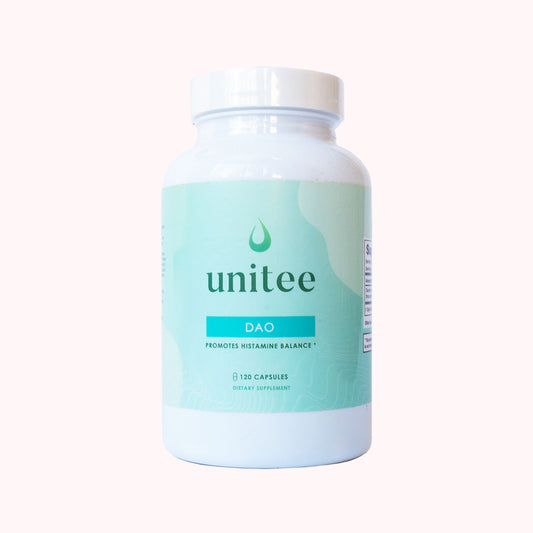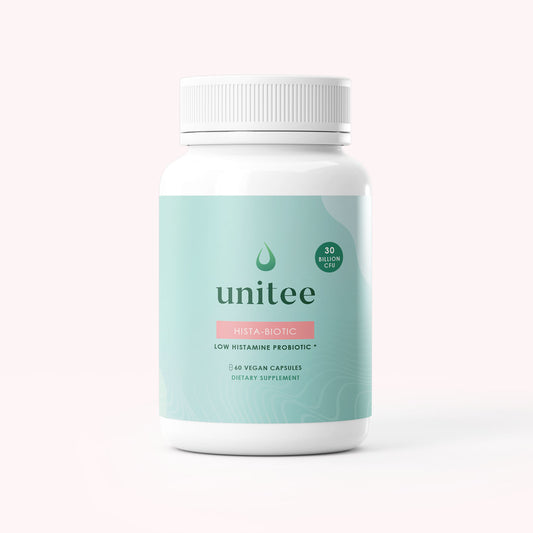Have you ever wondered why you get exhausted after having a big meal?
Do you find yourself needing to nap after a Sunday binge, or going into frequent food-comas?
Although this post-meal exhaustion frequents modern society, it’s actually your body’s way of telling you something big – something that definitely shouldn’t be ignored.
Inflammation: The Invisible Killer
As many of you know by now through reading my posts and blogs, inflammation is being increasingly recognized as the root of disease1. To briefly recap, this isn’t the acute inflammation we see in response to a wound or injury, but rather a chronic state of low-grade inflammation circulating the bloodstream.
The really scary part is that due to the processing and industrialization of foods, sedentary lifestyle and desk jobs, and constant high-stress environments of modern life, the majority of us are actually chronically inflamed, essentially meaning that the seeds of disease have been planted.
Okay, so I just told you most of us have “disease-seeds” inside of us. Are you freaking out yet? Don’t!
The human body is vastly complex, and our biology has provided us with an amazing capacity to fight off disease when functioning correctly. To exemplify these amazing disease-fighting capabilities, let’s look to cancer. The healthy human body produces thousands of cancer cells per day, which are destroyed by proper surveillance and immune functioning. It is only when our biological and immune systems begin to deteriorate (due to causes such as low-grade inflammation) that these cancer cells have a chance to proliferate, and actually become harmful to our bodies2,3.
Examples like this make it clear that the presence of low-grade inflammation is definitely not something to be taken lightly. However, the double-edged sword is that this deterioration occurs so gradually, that although we have plenty of time to reverse or repair the damage, it is often this time in itself that causes individuals to put off healthy living until a tomorrow that never comes.
Food and Chronic Inflammation
A major contributor to low-grade inflammation stems from having a heightened postprandial inflammatory response which is a fancy way of saying that our immune system becomes unnecessarily activated after we eat4.

The Postprandial Inflammatory Response
This response occurs as a result of the most important function of the intestinal lining: to act as a barrier separating the external environment from our internal biology. In order to allow the transport of nutrients into our body, our gut lining contains pores, and when food attempts to enter through these pores, our immune system flares up as a protective mechanism to survey the situation and ensure nothing scary is getting into our bodies.
The issue is, if our intestines are overly porous and allow whole food particles to get through, or if we are eating foods that are too foreign to the body, we experience heightened immune activation that surpasses a state of healthful biological functioning5,6. This is what you are feeling when you become exhausted after a meal, and indicates an issue with either meal composition or digestive functioning.

To exemplify the significance of this mechanism, it can be seen that individuals presenting with various chronic disorders such as irritable bowel syndrome (IBS), possess a significantly compromised intestinal barrier7,8,9,10.
Additionally, although most individuals with chronic disorders demonstrate compromised intestinal health, it is important to note that these intestinal malfunctions typically begin long before any symptoms appear, and illness can often pop up suddenly, appearing as though you’ve developed an overnight chronic illness.
So what can we do to minimize the probability of developing a chronic disorder?
Dampening Down Postprandial Inflammation
As I’ve said before, there’s no one single way of staying healthy, and instead it’s about a combination of positive behaviors, and my blog is here to give you the best options that will have the most profound impact, thus allowing you to choose which behaviors suit your lifestyle best.
So that’s what I’m here to do today – to tell you about one of the most important proteins for combating chronic illness that you’ve probably never heard of: lactoferrin.
Lactoferrin is one of the most powerful antibiotics that our bodies produce, and is a universal intervention for disease. It is one of the most important immunological substances in evolution, and knows exactly how to distinguish between pathological and non-pathological entities11,12,13,14.
Due to this amazing capability, the presence of lactoferrin actually eliminates unnecessary activation of the immune system, as it is able to protect the stomach against any pathogenic entrance that may occur. In other words, increasing your lactoferrin levels can diminish the post-meal inflammatory response discussed earlier, thereby reducing a major contributor to chronic inflammation. But how can we achieve this?
3 Ways to Increase Your Lactoferrin
Now that I have you all stoked on lactoferrin, I’m assuming you’re wondering how to increase your biological levels and experience all of the benefits discussed. Well, there are three ways to do this….
- Breast milk. In quantities of 4g/L, lactoferrin is found in its greatest abundance in human breast milk. This is to protect babies during nursing, at which point their immune system is not fully mature. But…let’s face it, human breast milk isn’t exactly readily available at the supermarket for us adults. So let’s move on…
- Supplementation. Lactoferrin can be found in supplement form, and due to its universal applicability to disease, it is often used as a starter when a practitioner doesn’t know where to begin with an intervention. My personal recommendation for high-quality lactoferrin can be found here. The issue with supplementation however, is that it is often isolated from cattle milk, which may result in some highly lactose intolerant individuals experiencing mild adverse effects.
- Upper body exercise. The healthiest and most economical option is to increase lactoferrin production naturally through upper body exercise. Evolutionarily, we did a lot of upper body exercise before eating our meals (climbing trees, catching fish, etc). Now, unless you plan on wrestling your fridge before each meal, there generally isn’t much activity involved, however evolution has not had enough time to catch up and we are still stuck with this mechanism of producing lactoferrin through upper body exercise.The good news is that this mechanism still works in all the same glory that it evolved to, and if you do just 10 minutes of upper body exercise before meals, you will actually produce enough lactoferrin to render immune activation unnecessary, thereby diminishing the post-meal inflammatory response. AWESOME!

Now, I get that doing 10 minutes of upper body exercise before every meal is a little bizarre for our modern life, but as I said before, health is not determined by a single factor, but rather by an accumulation of positive behaviors. Simply putting more emphasis on the importance of upper body exercise (which in terms of chronic illness takes precedence over lower body exercise), trying to incorporate 10 minutes a day into your routine, or only doing it before especially inflammatory cheat meals, it all accumulates to make a difference.

Remember, disease doesn’t pop up overnight (the symptoms often do, but the biological mess was stewing well before any symptoms appeared), so taking care of yourself before you feel ill is an important part of staying healthy.
Which behaviours will you choose to dampen down your postprandial inflammation?
Anita Tee
MSc Personalized Nutrition, BSc Genetic & Molecular Biology, Personal Training Specialist
References
1. Jurjus A, Eid A, Al Kattar S, Zeenny M, Gerges-Geagea A, Haydar H et al. Inflammatory bowel disease, colorectal cancer and type 2 diabetes mellitus: The links. BBA Clinical. 2016;5:16-24.
2. Rinkenbaugh A, Baldwin A. The NF-κB Pathway and Cancer Stem Cells. Cells. 2016;5(2):16.
3. Park M, Hong J. Roles of NF-κB in Cancer and Inflammatory Diseases and Their Therapeutic Approaches. Cells. 2016;5(2):15.
4. Muñoz A, Costa M. Nutritionally Mediated Oxidative Stress and Inflammation. Oxidative Medicine and Cellular Longevity. 2013;2013:1-11.
5. de Vries M, Klop B, Eskes S, van der Loos T, Klessens-Godfroy F, Wiebolt J et al. The postprandial situation as a pro-inflammatory condition. Clínica e Investigación en Arteriosclerosis. 2014;26(4):184-192.
6. Calder P, Ahluwalia N, Brouns F, Buetler T, Clement K, Cunningham K et al. Dietary factors and low-grade inflammation in relation to overweight and obesity. British Journal of Nutrition. 2011;106(S3):S5-S78.
7. Sánchez de Medina F, Romero-Calvo I, Mascaraque C, Martínez-Augustin O. Intestinal Inflammation and Mucosal Barrier Function. Inflammatory Bowel Diseases. 2014;20(12):2394-2404.
8. Hyland N, Quigley E, Brint E. Microbiota-host interactions in irritable bowel syndrome: epithelial barrier, immune regulation and brain-gut interactions. World J Gastroenterol. 2014;20(27):8859-66.
9. Gecse K, Róka R, Séra T, Rosztóczy A, Annaházi A, Izbéki F et al. Leaky Gut in Patients with Diarrhea-Predominant Irritable Bowel Syndrome and Inactive Ulcerative Colitis. Digestion. 2012;85(1):40-46.
10. Barbara G, Zecchi L, Barbaro R, Cremon C, Bellacosa L, Marcellini M et al. Mucosal Permeability and Immune Activation as Potential Therapeutic Targets of Probiotics in Irritable Bowel Syndrome. Journal of Clinical Gastroenterology. 2012;46:S52-S55.
11. Vogel H. Lactoferrin, a bird’s eye view. Biochemistry and Cell Biology. 2012;90(3):233-244.
12. Berlutti F, Pantanella F, Natalizi T, Frioni A, Paesano R, Polimeni A et al. Antiviral Properties of Lactoferrin—A Natural Immunity Molecule. Molecules. 2011;16(12):6992-7018.
13. Legrand D. Lactoferrin, a key molecule in immune and inflammatory processes. This article is part of Special Issue entitled Lactoferrin and has undergone the Journal’s usual peer review process. Biochemistry and Cell Biology. 2012;90(3):252-268.
14. Legrand D, Mazurier J. A critical review of the roles of host lactoferrin in immunity. Biometals. 2010;23(3):365-376.

Anita Tee
My name is Anita Tee. I'm a nutritional scientist who specializes in histamine intolerance. I hold a Master of Science in Personalized Nutrition and a Bachelor of Science in Human Biology and Psychology.For the past ten years, I have used my experience in nutritional and medical health sciences to create a scientifically backed, natural approach to healthcare that relies 100% on evidence-based research.As I previously suffered from - and overcame - histamine intolerance, my focus is to increase recognition and expand the available resources and protocols available for resolving this particular disorder. To date, I have helped over 4,000 individuals fully resolve or better manage their histamine intolerance symptoms.







